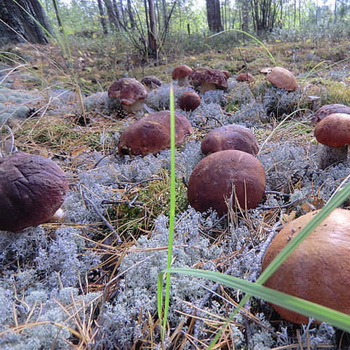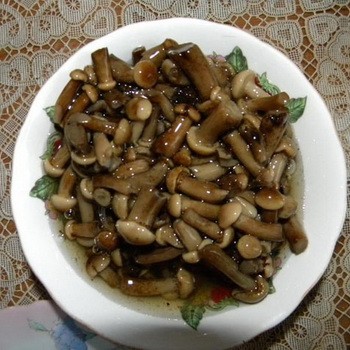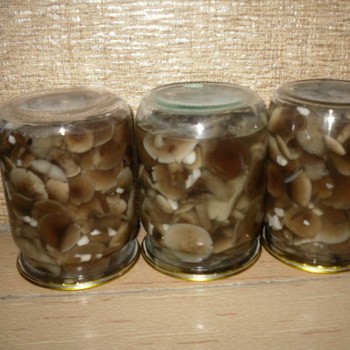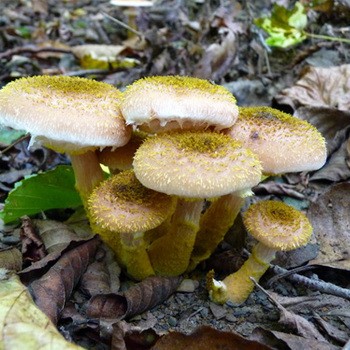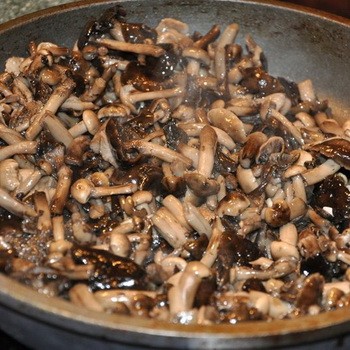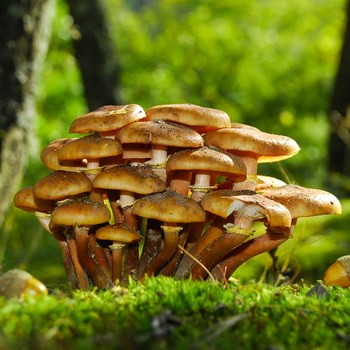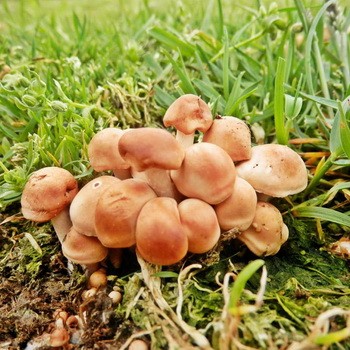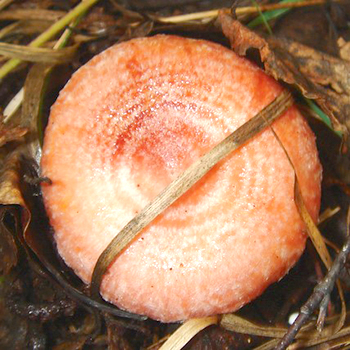How to grow honey mushrooms in the country and at home
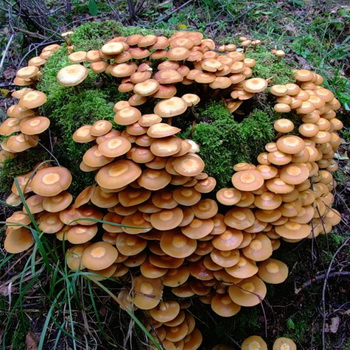
Content
The technology of growing honey mushrooms in the country and in the garden on stumps (with video)
Summer honey agaric (Kuehneromyces mutabilis) is well known to the inhabitants of Russia. Which of the mushroom pickers did not see the abundance of small fruiting bodies with thin legs on stumps? Hats are edible and tasty. Few mushrooms are able to produce on the logs such a high yield as a summer mushroom.
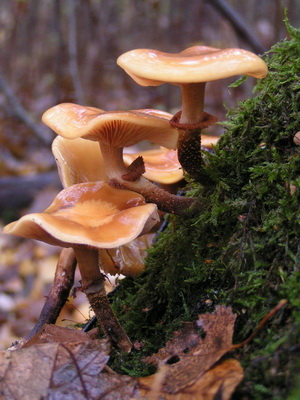
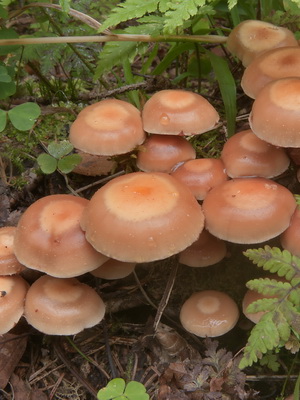
Summer honey agaric begins to bear fruit on birch logs a year after sowing. Mycelium winters well in logs. Fruits in high humidity. During cultivation, it converts the wood of logs into mycological wood, which has heat-insulating properties.
How to grow mushrooms mushrooms in the garden? The easiest way to plant mushrooms in the garden is to bring felling from the forest, pieces of logs or hemp on which this mushroom grows. Under the condition of regular watering in dry periods, summer honey agaric gives several waves of fruiting on the brought wood.
On sown in 2005 and half-dug logs, honey mushrooms grow near the ground. Summer honey agaric loves old, dilapidated stumps and branches.
To get high yields when growing mushrooms on stumps, you need to make a covered pit below ground level so that the top ends of the logs dug there with a summer opener do not reach the roof by 20-30 cm. It is best to make the lid from boards almost without slots and set it on bricks.
The mushroom also settles on old sections of logs on which it previously grew shiitake mushroom. In the conditions of our dry climate, such forest mushrooms as summer honey agaric and deer’s whip displace shiitake from the wood substrate. Apparently, this explains its absence in our forests.
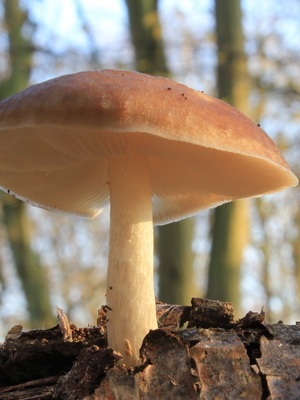
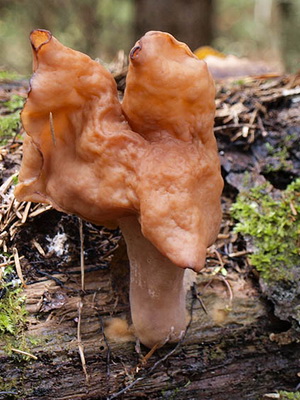
Trick deer (Pluteus cervinus) and autumn line (Gyromitra esqulenta) also grow on dilapidated deadwood and stumps.
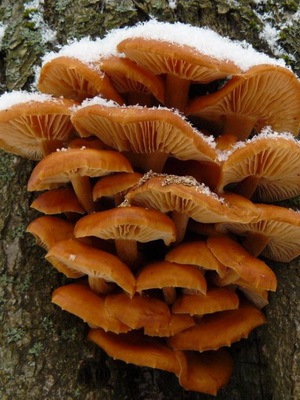
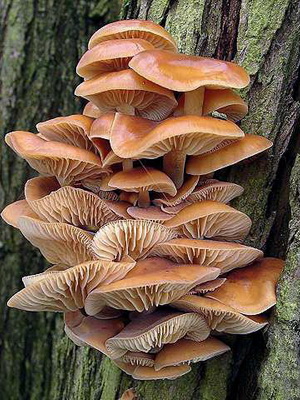
In the garden on the logs you can also breed winter mushrooms. Winter honey agaric (Flammulina velutipes) is an edible, tasty and healing mushroom. You can even eat it raw. Most willingly, it grows on pieces of willow wood, on willow stumps. It is possible to grow mushrooms and honey on birch logs. Fruit bodies are formed not only on the bark of logs, but also on the end. It bears fruit in late autumn and even in winter when positive temperatures occur during thaws. There are known cases of fruiting on New Year's Eve under the snow. Under the microscope, you can see how the frozen bursting cells of the winter mushroom mycelium begin to grow together when the temperature rises above zero.
Growing autumn mushrooms from mycelium on stumps
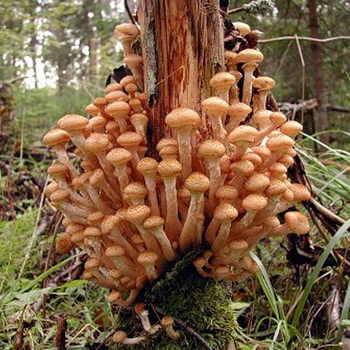 Autumn honey agaric (Armillaria mellea) it is difficult to grow on a separate stump, but it can settle on a garden site on stumps of birch and even on weakened apple trees.Growing honey mushrooms on stumps is also possible in a garden plot with a high level of groundwater. When refining the garden plots, the bushes and trees are cut down instead of the former shrubs and small forests, and the roots of the felled trees remain underground. Autumn honey agaric masters these remains with its mycelium and grows on them, crawling out of the ground.
Autumn honey agaric (Armillaria mellea) it is difficult to grow on a separate stump, but it can settle on a garden site on stumps of birch and even on weakened apple trees.Growing honey mushrooms on stumps is also possible in a garden plot with a high level of groundwater. When refining the garden plots, the bushes and trees are cut down instead of the former shrubs and small forests, and the roots of the felled trees remain underground. Autumn honey agaric masters these remains with its mycelium and grows on them, crawling out of the ground.
How to grow mushrooms from mycelium in the country? Cultivation in the gardens of autumn mushrooms is hindered by their unwillingness to take root on a separate stump. When growing mushrooms from mycelium on stumps, the mycelium will begin to master the stump wood, but this will end. He will not bear fruit until he seizes a large territory. Autumn mushroom prefers to form a plantation on many stumps and trees at once, capturing them with the help of long and thick rhizomorphs of its mycelium. Its cords from mycelium (rhizomorphs) glow in the dark. But in order to see this phenomenon, one must accustom one’s eyes to darkness for more than an hour.
There is also speculation that it may settle on garden trees as a parasite. Therefore, it is undesirable for the garden. But here, little depends on us. Growing mushrooms in the country and in the garden is not so easy, but if the mushrooms settled themselves, they cannot be destroyed. Therefore, there is nothing left but to collect them, salt or fry. When raw, autumn mushrooms can cause stomach upset. Even with cold salting, along with buns or with other molokans who do not require boiling, the autumn mushroom must first be boiled for 15 minutes so as not to poison. Boiled and dried autumn mushrooms are completely non-toxic.
You can try to create a plantation from dug out logs for growing autumn mushrooms. On the garden plot in the Solnechnogorsk district of the Moscow region, the forest comes close to the garden plot. Near the site there are stumps on which the autumn mushroom grows annually. It is possible to dig one and a half meter lengths of logs from the spruce trees destroyed by the bark beetle into the ground. Arrange drip irrigation of these logs and wait for the autumn mushroom to grab our logs.
To effectively moisten the logs along the axis, a hole with a diameter of 2 cm and a depth of 60 cm was drilled in the center of the log, and cylindrical cavities, which play the role of funnels for filling the water, were selected using a wood milling cutter in the upper part. Water can be poured from a kettle or using a drip irrigation system. Water is supplied from the barrel through silicone tubes and drips from a disposable syringe.
Ephedra are moistened for a long time due to the presence of tar. At initial wetting, non-rotten wood moistens slowly - about a week. Water enters a wet or rotten log rather quickly.
The video “Growing mushrooms" shows how to breed these mushrooms in the country:
How to grow mushrooms mushrooms from mycelium at home
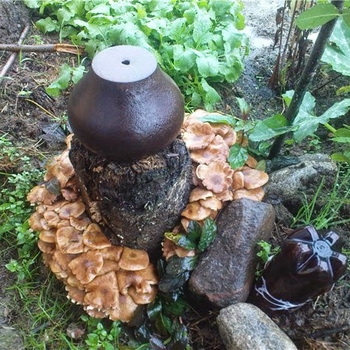 The basis of the substrate for growing mushrooms again at home is husk from sunflower seeds or sawdust of hardwood or dry pine boards.
The basis of the substrate for growing mushrooms again at home is husk from sunflower seeds or sawdust of hardwood or dry pine boards.
The fruiting bodies of the winter mushroom have the unique ability to push the hats into the zone of fresher air with the help of long legs. This property allows us to simplify the collection of fruiting bodies by growing winter mushrooms in a high package, in which only its lower part is filled with a substrate.
How to grow honey mushrooms at home to get a good harvest? To do this, take a bag of polypropylene sleeve with a width of 25.5 cm and a length of 28 cm. Place 2 L of substrate in it. You get a package with a diameter of 16 cm, a height of 28 cm and a volume of 5 l, of which 3 l is the free space above the substrate.
For the manufacture of one substrate block with a volume of 2 l, take 230 g of dry husk of sunflower or 200 g of dry sawdust. Add 70 g of grain (oats or barley). Add a teaspoon of chalk or lime flour - CaCO3 to the mixture. Add clean water to the substrate in such an amount that the mass becomes 900 g. Mix the substrate and place it on the bottom of the bag.
After that, the substrate in bags must be autoclaved for 1.5 hours or pasteurized by fractional pasteurization. Cotton plugs must be wrapped in aluminum foil and sterilized so as not to wet them.
After cooling the bags with the substrate with your hands, mash the cereal mycelium of the winter mushroom. Hands, table and the room itself must be clean! Open the neck of the bag and pour on the surface of the substrate mycelium (a tablespoon without a hill). Seal the mycelium and substrate in a bag with a spoon or hands. Insert a 3 cm plug of sterilized cotton wool into the top of the throat of the bag. Twine the throat of the bag around the cork.
For incubation during the cultivation of mycelium of honey agaric in the substrate, place bags on shelves at a temperature of +12. .. + 20 ° С. At this stage of mycelial development, air humidity does not matter. Through the film of the bag you can see how the mycelium grows from grains with mycelium. After about 30 days, the substrate block can be considered ready for fruiting. It will become denser and brighter. Small tubercles will appear on its surface - the rudiments of fruiting bodies. Blocks should be moved to the place of their future fruiting carefully, without removing the cotton plug, being careful not to damage the surface of the block.
For mushrooms to appear, just remove the cork from the bag and leave the bag open. The upper empty part of the package will play the role of a “collar”, in which the caps of the fruit bodies of the winter honey will stretch upward from the zone of high concentration of carbon dioxide to the air. Mushrooms are picked up after their hats come out of their bag, and the legs look like pasta that fills the top, empty part of the bag. Mushrooms are cut along with the legs, which are tied with a thread like a bouquet of flowers. Edible and hats and legs.
